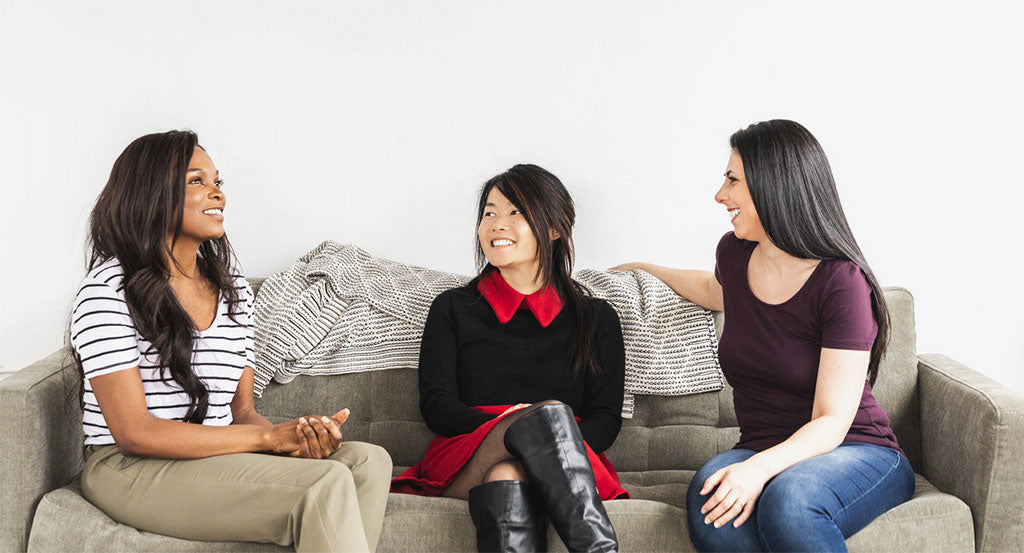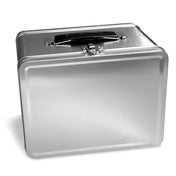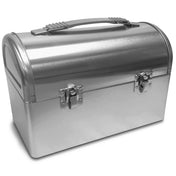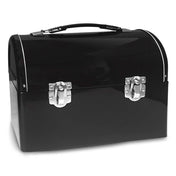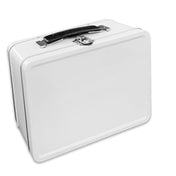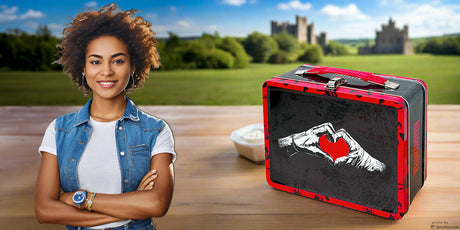I thought I was done dating. But after moving across the country, I had to start again - this time, in search of platonic love.
Thirty-seven minutes after sitting down to lunch, Francesca and I hugged goodbye in a strip-mall parking lot. We were both fairly certain, I think, that we would not be seeing each other again. The high-school classmate of a friend’s friend’s husband, she’d been such a promising friendship prospect: She was a professional violinist and fellow New Yorker who was writing her dissertation on pollen. But I was awkward, smiling too much and saying things like “That’s so funny” in lieu of actual laughter, while Francesca (not her real name) was overworked and seemed full of derision for Bozeman, Montana, the town to which I had just moved, and from which she and her husband were determined to flee.
As I drove home, the distant mountains laid out like a postcard I might have mailed back to Brooklyn, I was beset by an acute and familiar emptiness: an echo, I suddenly realized, of my many years of online dating, and of the disappointment that arises when the person on whom you had pinned your hopes for the future turns out to be a total mismatch. Indeed, I’d thought that I was finally done with dating, having moved across the country for Ben, a literature professor at Montana State University. But I saw now that I would have to start that dispiriting process over again, this time in search not of love but of friendship—and at the age of 40, no less, a decidedly late time in life to be seeking new soulmates.
According to “The Friendship Report,” a global study commissioned by Snapchat in 2019, the average age at which we meet our best friends is 21 - a stage when we’re not only bonding over formative new experiences such as first love and first heartbreak, but also growing more discerning about whom we befriend. Even more important, young adulthood is a time when many of us have time. The average American spends just 41 minutes a day socializing, but Jeffrey A. Hall, a communication-studies professor at the University of Kansas, estimates that it typically takes more than 200 hours, ideally over six weeks, for a stranger to grow into a close friend. As we get older, the space we used to fill with laughter, gossip, and staying up until the sky grew light can get consumed by more “adult” concerns, such as marriage, procreation, and fully developed careers—and we tend to end up with less of ourselves to give.
Over the course of nearly two decades in New York, I had prided myself on resisting this pull away from platonic love. My friends had gotten me through the death of my father, a traumatic divorce, and a near-fatal car accident, and I was as devoted to them as they were to their own children (proliferating now at an almost exponential rate). Even before I met Ben, however, I’d begun to grasp the difficulty in planning my future around those relationships. I remember huddling beside a propane heater in the early days of the pandemic, drinking to-go cocktails with my two most adamantly social friends and lamenting the latest couple in our circle to announce that they were leaving Brooklyn. “Don’t they care about friendship?” we cried, stunned that this pair would, by virtue of moving to the hinterlands, effectively renounce the bonds we held so dear.
But just one year later, Ben called to say he’d been offered a tenure-track position, and I made the decision to join him in Bozeman—a college town some 2,000 miles away, where I knew literally no one. As so many in my cohort had chosen Good Schools and Fly-Fishing, I had chosen Love and Mountains, and now I had no friends.
If our 30s are “the decade where friendship goes to die,” as the science journalist Lydia Denworth notes in her book Friendship: The Evolution, Biology, and Extraordinary Power of Life’s Fundamental Bond, then it’s no wonder that making friends at 40 is more akin to dating than I had anticipated: It’s dependent not only on chemistry and common interests, but also on a shared vision of what your new relationship could provide. Half the struggle is finding someone who wants the same thing you do, and at the exact same time. Here I’m reminded of Miranda on Sex and the City: “Men are like cabs,” she says. “They wake up one day, and they decide they’re ready to settle down, have babies, whatever. And they turn their light on.” In Montana, I’d need to find people who were not just delightful and committed to friendship generally, but also willing to expand beyond those best friends they made at 21 - people who, for whatever reason, still had their light on.
I arrived in Bozeman with a long list of people whom my friends, and friends of friends, had suggested that I meet. In addition to the pollen scholar, it included an Iraq War veteran who ran a ceramics studio out of his garage, an equine healer who focused on empowering women, an adventure-loving dad who worked in renewable energy, a retired couple who had been neighbors to my mother’s friends in Australia, a famous writer who was married to an even more famous writer, and a local politician.
Unfortunately, these contacts weren’t as eager as I was about the prospect of new friendship. I passed a pleasant afternoon talking conspiracy theories with the veteran, and a pleasant evening talking snowmobiles with the retired couple. But the adventure dad never returned my email, and the equine healer suggested a date many weeks in the future. Thus far I’ve found the famous writers too intimidating; when I asked the politician if she wanted to get coffee, she sent back a formulaic message suggesting I reach out to her campaign manager. A French professor with purple dreadlocks who took me skinny-dipping at far-flung hot springs had recently fallen in love with a snowboarding instructor in Jackson, Wyoming, and would soon be moving herself.
Meanwhile, Ben introduced me to two great women who were already old friends, one a librarian and the other a comedy writer. When the comedy writer invited us over for enchiladas and a game of euchre, I thought that I had finally found my squad. But then I heard through the grapevine that they had gone to a Halloween party without me, and then they invited me to the town’s Christmas Stroll by accident. “You got included on this thread by mistake, but we’re happy to be chatting!” the librarian texted, followed by an emoji that looked to me to be chortling. Only then did I realize that I had greatly underestimated the difficulty of breaking into a long-established group. I get it: I, too, used to think that I had all the friends I needed.
Shortly after the Halloween party, or lack thereof, I did something I still find embarrassing: I downloaded Bumble for the second time, selecting the mode that matches you with friends rather than romantic partners. “Make new friends at every stage of your life,” the app promised me cheerfully. I tried to ignore both the bad memories unearthed by its jaunty yellow interface and my hypocritical presumption that anyone who went online to find friends wasn’t someone I wanted to befriend in the first place. But as I waded through a sea of women who shared in my basic predicament—“The struggle to make new friends in your thirties is real yo,” lamented a brunette in a fur coat—I grew more and more fascinated by this brave new world, and the larger questions that it prompted about friendship. (Which pictures, words, and “Basic Info Badges” would you include if you were trying to woo a kindred spirit?)
And although I noticed some interesting differences between dating and friend-dating—the slight suspiciousness with which I had addressed the men on Bumble had vanished, replaced by a kind of manic geniality—more often I felt appalled by all their similarities. I found myself swiping right on some women just because they were pretty, for instance, and swiping left on others just because they had children. (My best friend has three children!)
I matched with only one person who actually intrigued me: Steph, a blond woman with tattoos and a lovely smile who had recently moved to Bozeman from Salt Lake City. “Very into good conversation, progressive thinking, flexibility, and genuine connection,” she wrote in her profile, though what really got me were her two sphynx cats, perched like adorable aliens upon a truly exceptional leather couch. When we met for drinks a few days later, we talked fathers, divorce, and our ambivalence about motherhood, exchanging vulnerabilities and laughing like we’d known each other for months. This—the shock of recognition and affection, the giddy attraction, the spreading sense of possibility—was what I had been missing.
I’ve seen Steph only twice since then, but my guess is that we’ll be great friends, not just because of that ineffable connection—as integral to friendship, I’m now convinced, as it is to love—but also because, unlike the other 30- and 40-somethings I’ve met in Montana who are understandably enmeshed in their own lives, we’re both transplants who see making friends as an imperative, as important to us at this particular moment as our partners or careers. At our last dinner, we both confessed that we’d rather hang out just the two of us than plan a double date.
I spent the holidays in New York, visiting old friends and reconnecting with a world that had continued without me in a way that felt both sad and comforting. On New Year’s Day we stopped in a used-book store, where I bought a little volume of quotations about friendship that I finally opened on the airplane back to Bozeman. Some were sentimental, others humorous—Samuel Johnson compared the feeling of friendship to being full of roast beef - but there was only one, from a letter by Emily Dickinson, that spoke of the sense of fulfillment that I sometimes suspect our friendships alone can provide. “My only sketch, profile, of Heaven,” Dickinson wrote, “is a large, blue sky, bluer and larger than the biggest I have seen in June, and in it are my friends - all of them - every one of them.”
Looking out the airplane window at the great blue sky, I thought about how making friends in midlife, while challenging, might also be a gift, a chance to enlarge one’s world and one’s self. It sometimes feels at 40 as if our lives have assumed their final shape, entrenched as we so often are in our careers and cities and relationships. But to meet new people like Steph - who has already taught me about the Mountain West and what it’s like to grow up in a Mormon community, and who sees me as I am right now, not as who I used to be—is to acknowledge the growing that we all have left to do. When I imagine my life in another 40 years’ time—full of old friends, yes, but also friends that I have yet to meet - it looks like a sketch of heaven indeed.
Original article by Katharine Smyth appears on The Atlantic
Photo courtesy of Matthew Henry / Burst

